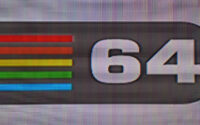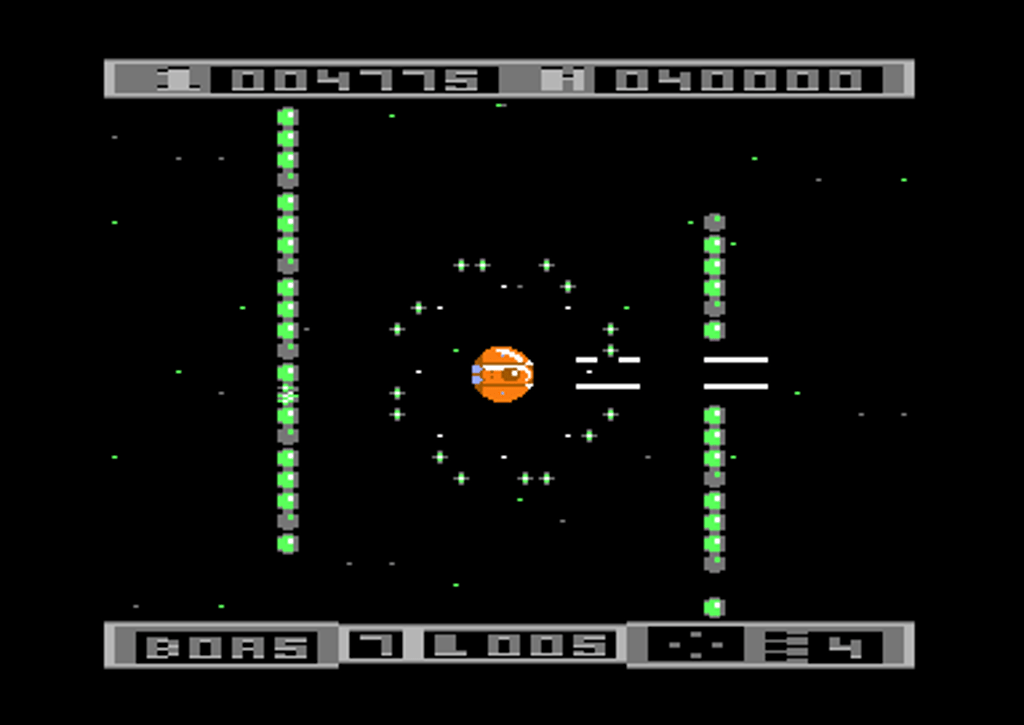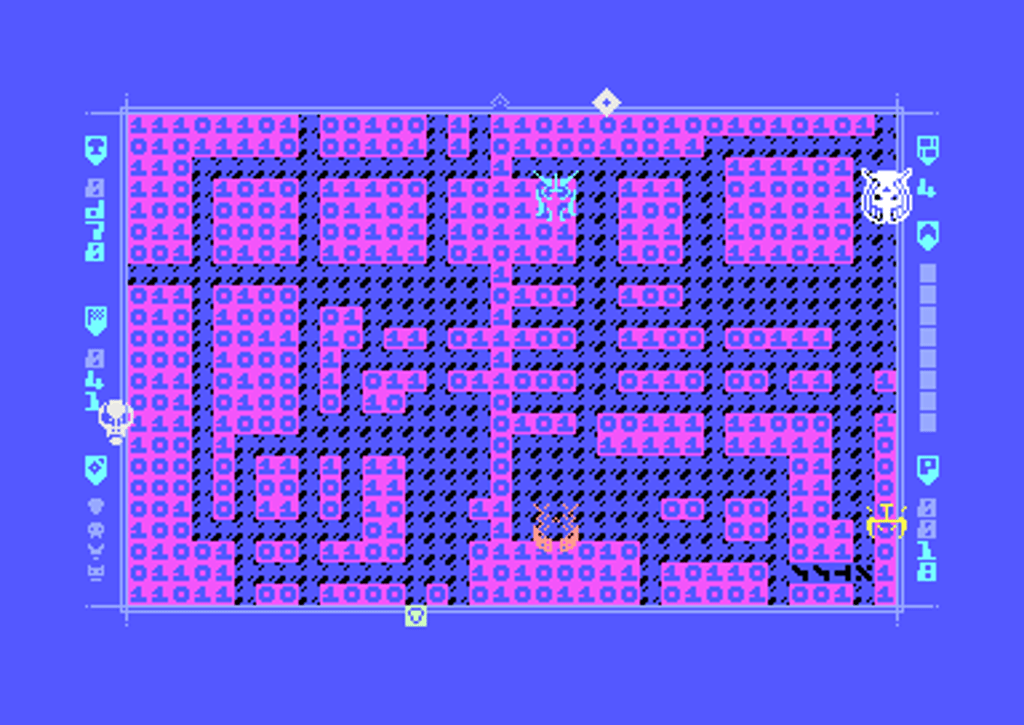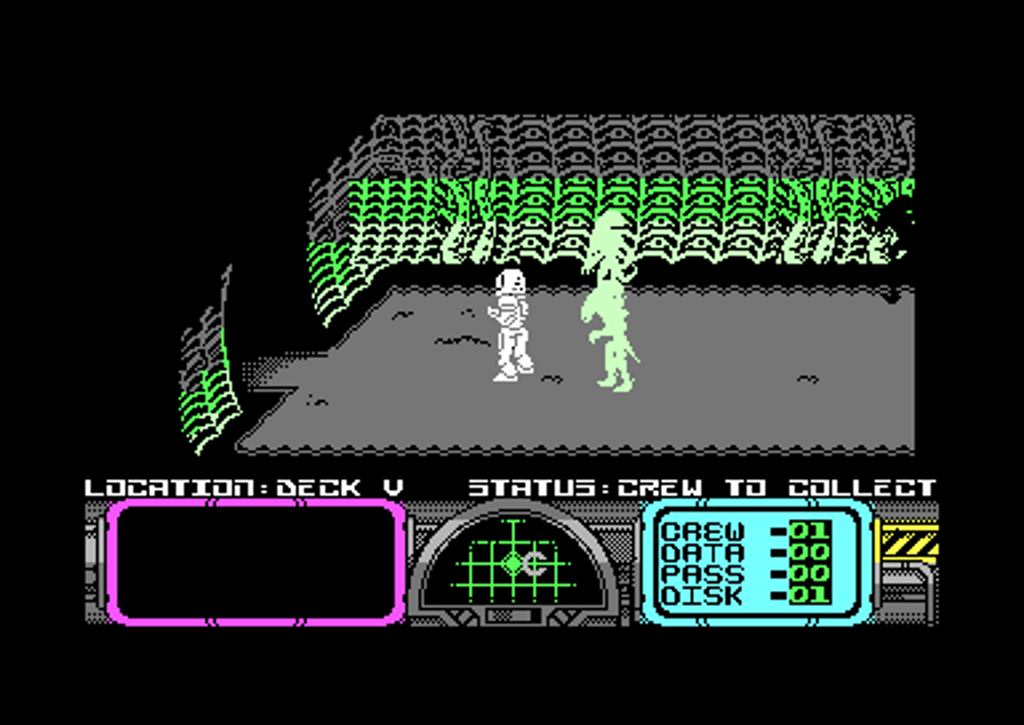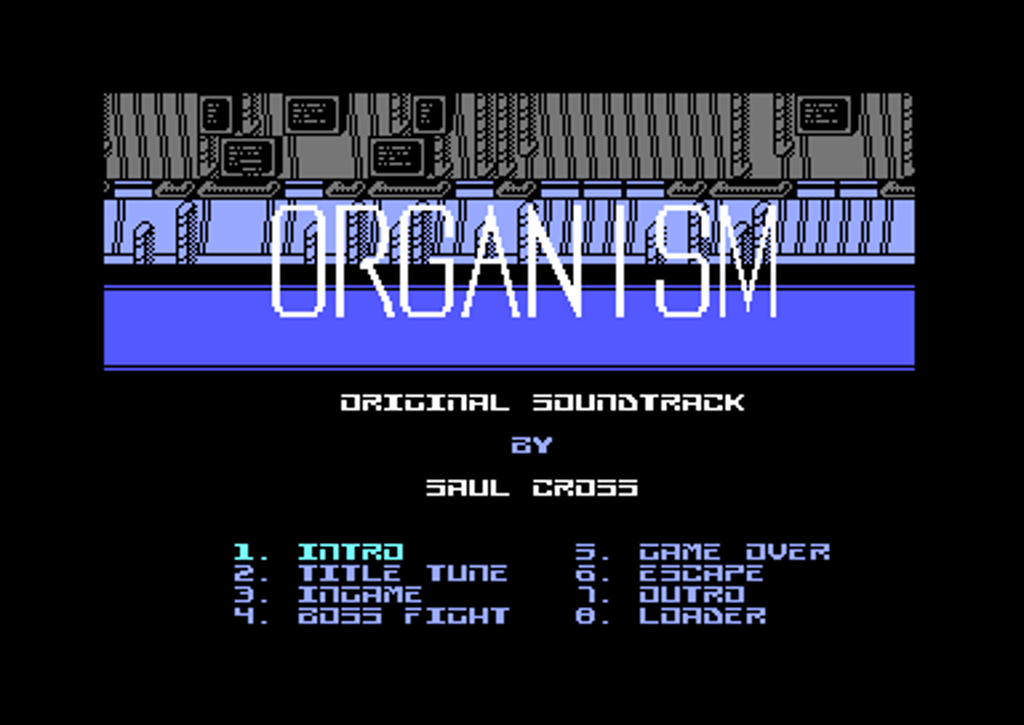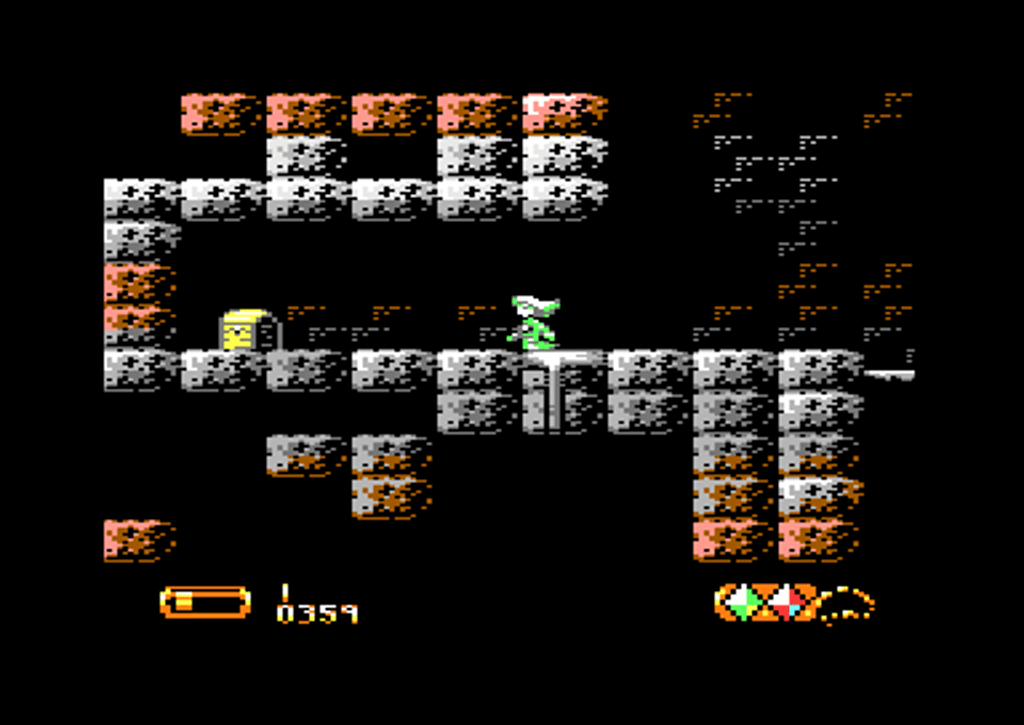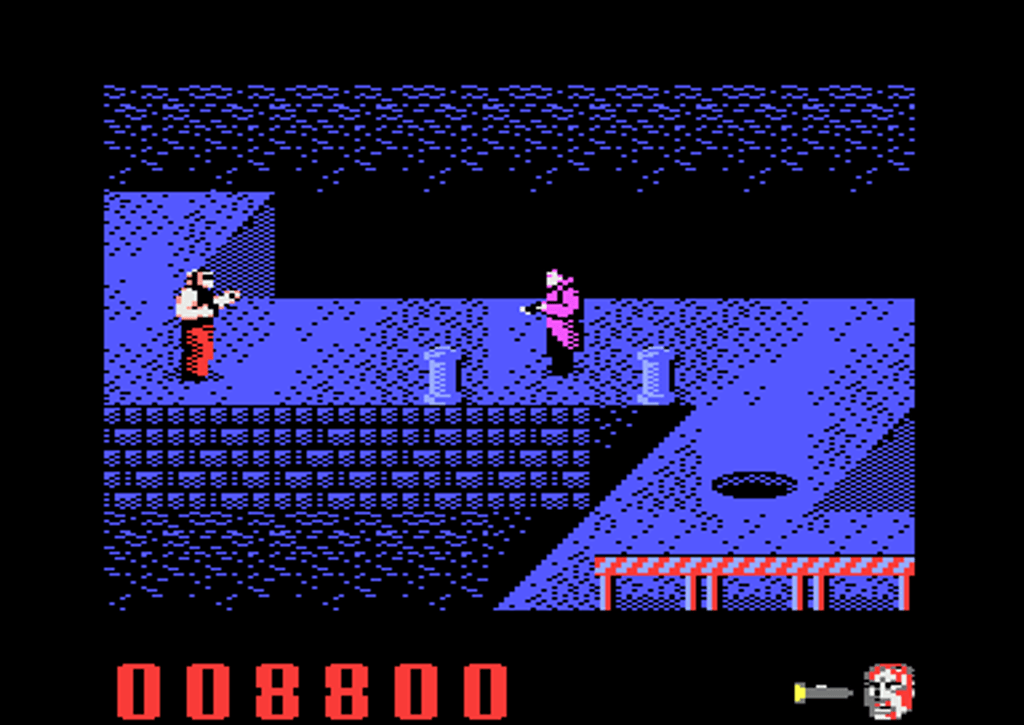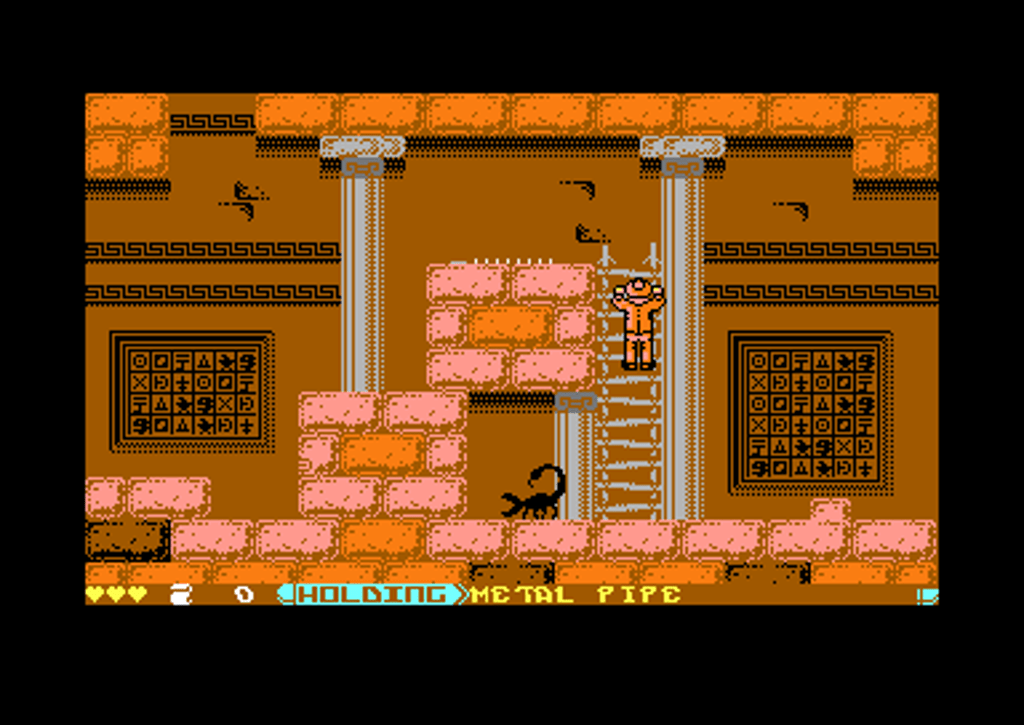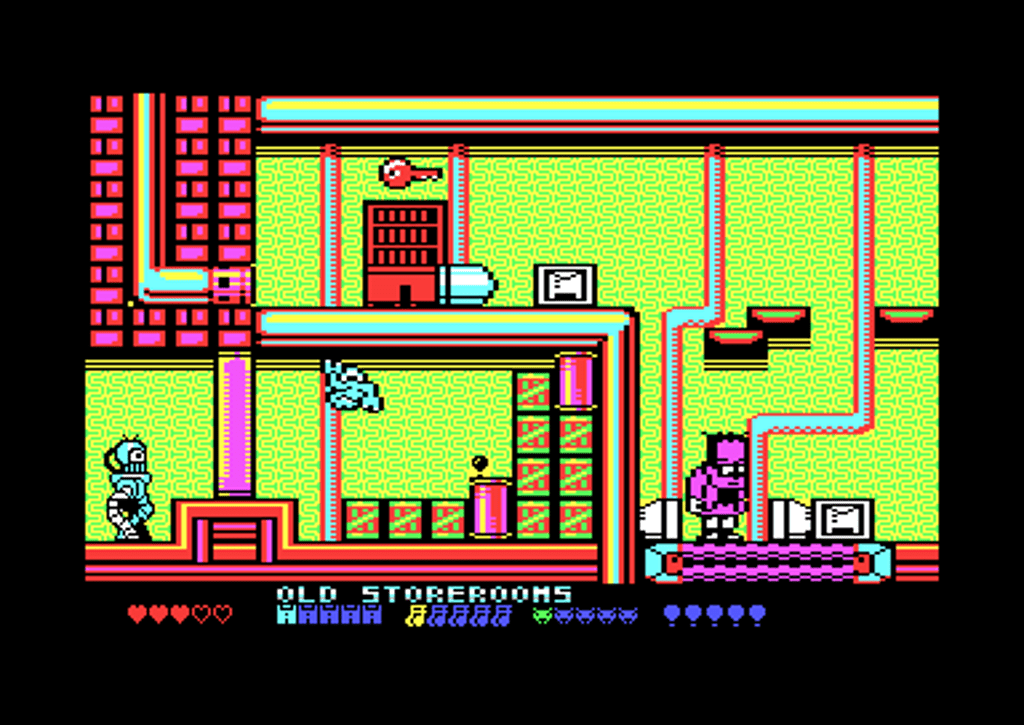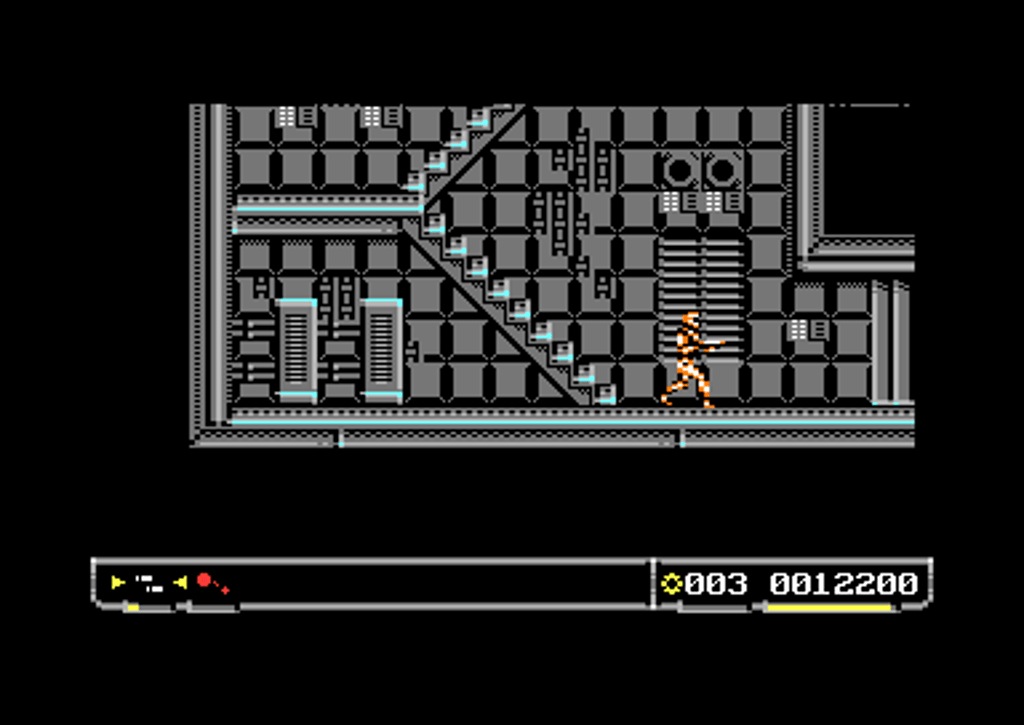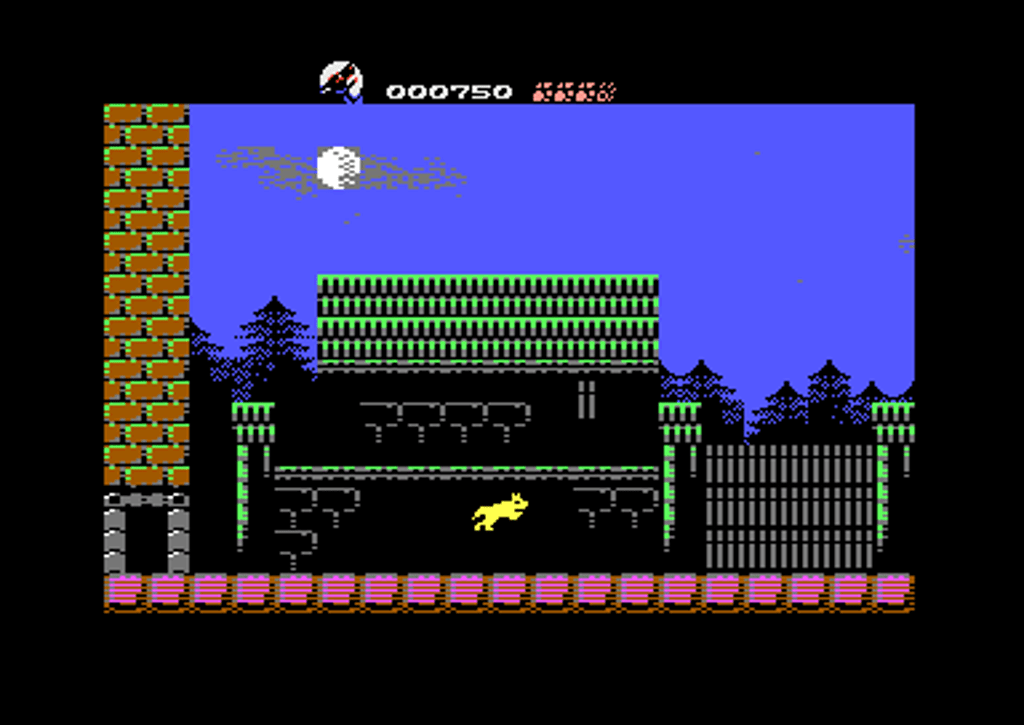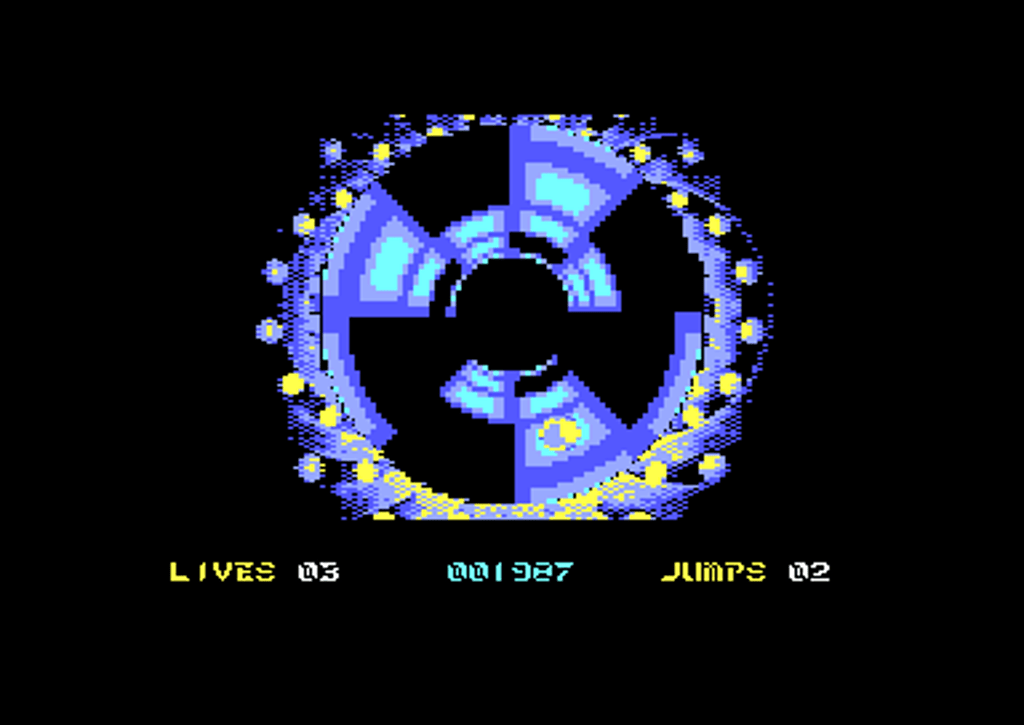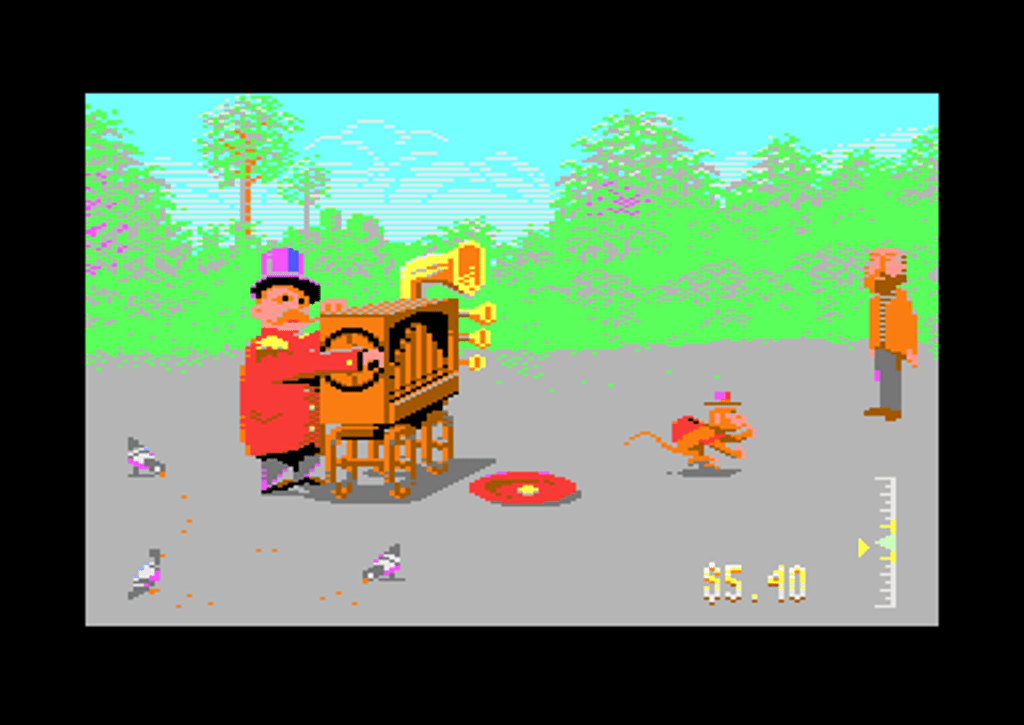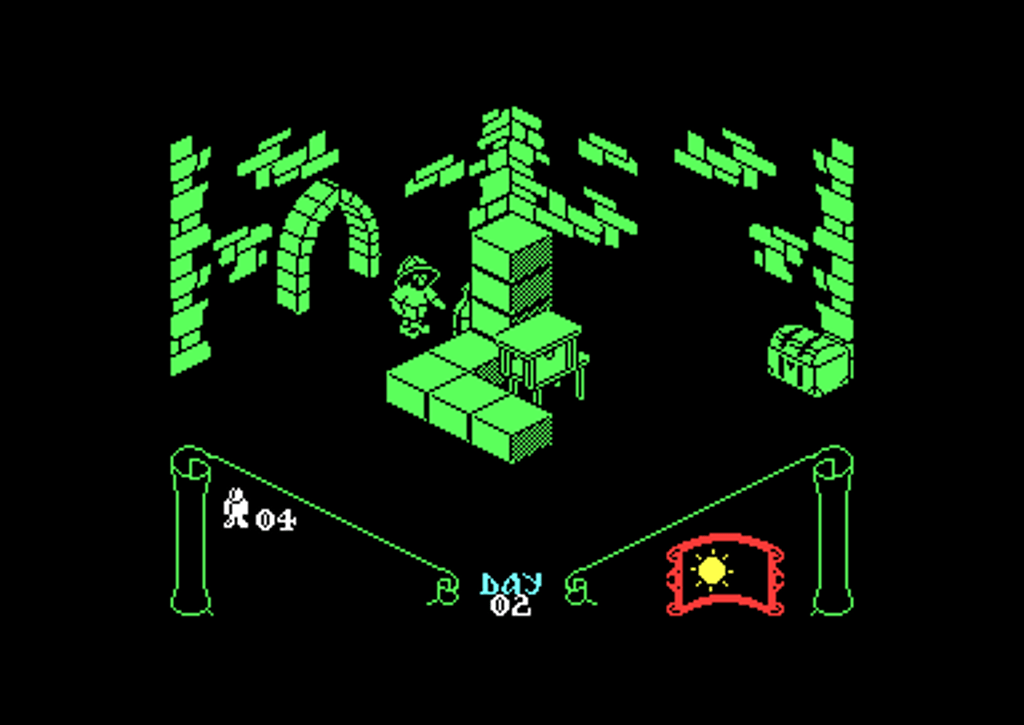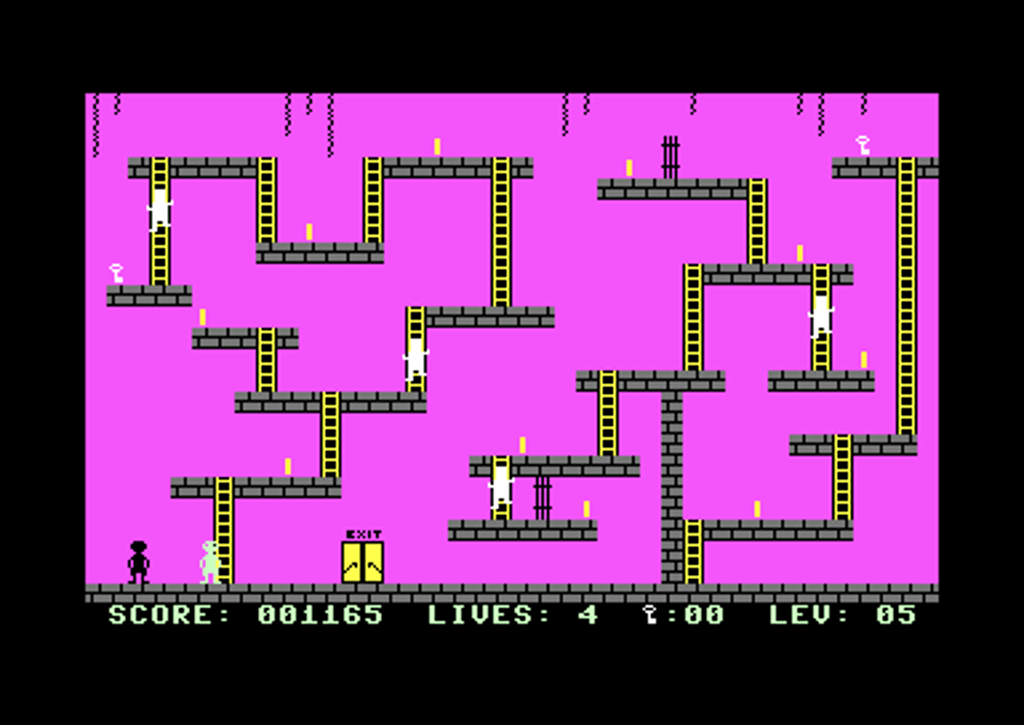Resurgence C64 – 10 Games Of The Year: 2018

And for the sake of consistency when we are “comparing” stuff year by year, there are 217 C64 games from 2018 listed in the Gamebase64. That’s about twenty more than from the previous year.
Anyway, here are ten more reasons to abandon (At least for a good while.) your go-to platform for hot, new games – In favor of the… C=…
1. Hunter’s Moon Remastered
Thalamus
Martin Walker’s original and attention-stealing Shoot ‘Em-Up returns… 31 years later… (Which the word “Remastered” in the title would indicate.)
If Stavros Fasoulas put Thalamus on the Shmup-map with Sanxion and Delta, then Hunter’s Moon cemented their position as a publisher that clearly knew a damn fine Shoot ‘Em-Up when they saw one. All their games have a very distinct and original look.
The worst way to go into Hunter’s Moon is to try playing it as an ordinary top-down multi-directional scrolling shooter. With the Auto-fire blasting non-stop, you might survive for a while and get through a couple of levels, but essentially, you won’t get very far without a balanced combination of tactical thinking, a fast trigger-finger, and even faster reflexes…
Following some seriously bad luck, you have ended up in an unexplored galaxy consisting of 21 star systems with 180 levels in total. (Compared to 16 systems with 128 levels in the 1987 original.) The levels are procedurally generated, which in this case means that they have a certain style and that they fit in a single-load program. On each “loop space”-level, you have to collect Starcells (A cluster of sparkling stuff.) that more than often are surrounded by construction cells. These cells form so called “cities”. These cities in turn inhabit Worker cells (White spherical objects.) that move around the cities and tirelessly repair everything that gets damaged. (That’s when you try blasting parts of the cities to pieces.) To protect the city, there are Attackers and “Homing In” who equally tirelessly attempt to destroy the invader (you) by launching lethal, heat-seeking spores in your direction.
Collisions with the construction cells and direct contact with Workers, Attackers, spores, etc. equals immediate death. Your Perma-Shields protect you to a certain extent, but you can’t always rely on them. (They have limited power and are limited in number.) Get all the Starcells, and you can teleport to the next level via a star map. Complete all, and you travel to the next star system after a Bonus-section. In this section, you have to wipe out all the Workers while remaining in one fixed spot in the middle of the screen. Your vessel, the round-shaped “Hunter”, can also have three different engines and four different colors. (Selectable from the main menu.) You also need to pay attention to the “In-Game Infobar” that displays various data, including a useful radar. (Even if the levels always “only” are 128×64 characters large, they can be pretty tricky to search through in one piece.) Hunter’s Moon also has a “Random Mode” (The levels are randomized in order.) and an “Off-Duty Mode”. (Sort of a dynamic “screen saver” with psychedelic patterns. Dynamic in the sense that you can affect it with the Joystick.) And even more in the shape of Easter eggs…
So what’s in the “Remaster” itself? A charming “Cyberload”-animation before the cinematic intro (There is an outro as well.), an updated version of Matt Gray’s fantastic loading music (Except here, it’s a intro-screen tune minus the obvious loading times.), graphical polish (Which you’ll definitely notice in side-by-side comparisons.), new in-game music (Also by Matt Gray. Of course.), a “Save game”-feature, a comprehensive and well-designed level editor, and as a Bonus, you get the original version of the game. This is how it’s done – Use the original as a foundation, polish it until it shines even more, and add tons of the good stuff. It’s well worth every single cent. — 1 Player · Joystick · Cartridge (Physical + Download)
Available from https://thalamusdigital.itch.io/hunters-moon-remastered for $4.99.
2. MAH v2.0
Protovision / Retream
Simone Bevilacqua’s original 2015 non-category specific masterpiece gets an overhaul.
Of course the first interesting thing outside Malefica Annihilatio Humanitatis (Changed to “Magna Annihilatio Humanitatis” in v2.0.) would be what this overhaul consists of? The over-simplified answer would be: It looks better and plays even better than v1.0.
In reality, there are closer to a hundred improvements to everything from the built-in manual to the ending. In screenshots, the game doesn’t look like there is too much going on, but MAH is jam-packed with visual effects and simulated glitches. (As it takes place inside a computer system.) None of the games that MAH is linked to via the official saga are affected by anything in either “direction”. (The games are: BOH, Huenison, Quod Init Exit IIm, SkillGrid, and KOG. Only Quod Init Exit IIm is available on the C64. The rest are available for newer platforms like the Amiga and Windows.)
It all started with the Purifiers taking over the “Apocalypser” and declaring war on humanity. To make sure that nobody stops the countdown to destruction, they activated the ApocalypShield – Layers of computerized defense mechanisms. Meanwhile, the clock starts ticking precious time away, starting at 107A seconds. (Which is Hexadecimal for 4218. And that equals 70 minutes.) With a program called the Peekpoker, you enter the system after typing in your initials. The “Switch” to the Apocalypser is hidden behind 24 layers of Bitwall, 12 Ports, 8 Channels, 4 Decryption layers, and 17 Quarantine layers.
Each part is a mini-game that you should try to beat as fast as you can. It lies in your best interest. The games vary between simple, vertically scrolling Shoot- and Collect ‘Em-Ups to the more tricky ones, like one where you have to move around the screen like in Snake and pick the symbols popping up on the edges. The tricky part would be to be able to stop on the right character once you hit the edge since you can’t stop moving on the field. (Like in Snake.) There is another similar sequence, where you have to pick the right symbol for the four-digit password on screen… And then, there is the “multi-directional scrolling conveyor belts”-stage where you have to stay on the conveyor belts and blast at a disembodied head from three directions until you unlock an exit. The head’s mouth is the color-coded combination lock. My anti-favorite would also be the stage where you have to shoot another head until it drops a key. You then have to pick up the key, avoid the head that in that very moment starts chasing you around, and place the key on the on-screen keyhole. But. There is another keyhole traveling around the borders of the screen. Both keyholes have to align vertically or horizontally in the moment your key is on the stationary keyhole… (I regret now that I even attempted to describe this fraction of the game.)
Anyway. The mini-games appear in a slightly different order depending on which part of the system you are trying to hack. Reading the manual is definitely recommended. While playing. Because it’d be pretty much impossible to memorize everything before a session, and it’s not always obvious what you’re supposed to do in the different sequences. And if you don’t feel like reading the instructions, at least have the Quick Reference Card ready.
MAH features a Megaton of technically impressive stuff like a dynamic soundtrack (Ten excellent tunes that would sound fantastic in Metal versions!), 138 enemies, intro / outro, and so on. It’s simply a hardware effects overload at 50 fps. And yes – It comes with an epilepsy warning. — 1 Player · Joystick / Keyboard · Disk / Cartridge (Physical + Download)
And if you fancy a digital version, there is a place where you can go – https://retream.itch.io/mah – $3.99 is a small price to pay as the world needs you.
3. Organism
Psytronik Software
When the “Alien”-movies just won’t reach the high standard of the original ones, it’s good to have at least one more game on the theme…
U.T.S. (United Transport Ship) Heracles is on its way to military base Damecles to deliver “personnel and military supplies”. (Which, as we all know, always goes exactly as planned.) But just like clockwork, something goes sideways as a breach is detected somewhere aboard and there are sudden signs of a contamination… Via the computer terminal, you get new orders as you are awakened from your cryo-sleep: “Evidence of company involvement must be destroyed. Set self destruct sequence and use escape pod, set co-ordinates to emergency pickup point gamma”.
The back story is told as a cut-scene before the title screen, and it’s a bit more fleshed out in the manual / instructions. (Excellent design with the intro. And a terminal with green text over a black background gets more than half the job done!) It’s a damn good slice of Sci-Fi horror that immediately sets the atmosphere as soon as you enter the first deck on Heracles. Organism is an arcade adventure set in a combination of single-screen rooms and sideways scrolling corridors. Heracles has 25 decks (Named after letters in the alphabet.) spread out over eleven floors. You have access to some sections right from the start, but you will need electronic passes to freely move between the sections. (This is done on a map screen by pushing the Joystick up or down before pressing the Fire-button.) You walk around the ship armed with a laser gun and decimate Face Huggers and other very familiar creatures. That there are surprises during your mission is an understatement.
On the bottom fourth of the screen, you have a health indicator illustrated as your heartbeat, a motion detector (As important as air and water.), location (Deck.), and status. The status panel keeps a numerical track of the Crew (All members have become very intimate friends with the aliens during the trip and must be “neutralized”. You need to locate them via their dog tags that are found around the Heracles.), Data, Pass (The key cards for the locked doors.), and Disk. The disks are used on terminals, which triggers a puzzle game where you have to connect on-screen squares in different colors. This is done by placing data lines between the squares without overlapping another data line. Upgrades for your trusty weapon can also be found – Especially where they are needed on the lower decks. (That’s where the infestation is more severe.)
Organism doesn’t only manage to convey a feel that’s in line with classics such as Electric Dreams Software’s Aliens – The Computer Game and Electronic Arts’ Project Firestart, but it also provides frequent and sweaty action. (It is fully possible to dodge the aliens instead of trying to kill all of them approaching from different directions.) Trevor Storey’s graphics look awesome (Monochromatic well-defined Sprites over equally well-defined backgrounds.) and the screen layout works perfectly. There is nothing to complain about when it comes to the controls either. Plus Saul Cross’ soundtrack gives the game an even tighter atmosphere. = Another highly recommended game – Especially if some good 8-bit “Alien”-style action just has seemed to elude you all this time. Maybe this is the game you have been waiting for? — 1 Player · Joystick · Disk / Cassette (Physical + Download)
The stand alone program on the disk is called “Organism Music”, and it’s simply a music player for the OST. As expected, there aren’t too many catchy numbers among these tracks – Just atmosphere and pure mood.
The digital version of Organism v2.0 is available at https://psytronik.itch.io/organism-c64 for $4.99. (v2.0 eliminates various bugs and problems with v1.0.)
4. Pains’n’Aches
Psytronik Software / Wide Pixel Games
The very, very welcome sequel to Knight ‘n’Grail…
Knight’n’Grail was this spectacularly good 2009 flip-screen arcade adventure produced by Wide Pixel Games. The game starred a Knight who attempted to save his beloved from a nasty serpentine curse. The Knight asked the Arch-Mage for help, and in return, the Arch-Mage wanted a specific golden goblet. But now, in the sequel, the Arch-Mage’s love has been struck with the same curse that hit the Knight’s sweetheart…
If you played the preview to Knight’n’Grail II, you might remember that it was a horizontally scrolling Shoot ‘Em-Up starring a bird that could spit fiery stuff. The game was never finished, but this bird happens to be the Knight in avian form, and he gives the goblet to the protagonist in Pains’n’Aches as a reward for turning the bird into a Knight again. Right? So the Arch-Mage has to shape-shift into a human next in order to embark on another rescue mission. And this time, it’s about a special pendant. This pendant is said to be able to break the curse once and for all…
The game starts with a beautiful title screen with an exceptionally good piece of music by Hans Axelsson. Here, you have two options: To start a new game or load a game. Before you can start running and jumping through another big-ass flip-screen Dark Fantasy-setting, there is an introduction that explains a part of the story. (The plot twists are in the game itself!) Once the adventure starts, you learn everything you need to know by reading the stone tablets. Some have straightforward information, and others are more cryptic. The first section also shows how the Save function works and where to expect Boss battles.
And by then, you have most certainly noticed how exceptionally good the controls are. As far as platform games go on these 8-bits, there is just no way that they could be better. Pixel perfect. (Like in many other games, of course.) The Fire-button is for shooting magic missiles, so the jumps are directional in absence of a separate jump-button. And pushing the Joystick down lets you drop down from any platform. Joystick + Down is also used for talking to characters, e.g., the shopkeepers that sell valuable info, or characters that give you good shit if you a favor for them. Every enemy you kill leaves a coin or two behind, and these are logically used in the shops.
The only keyboard commands that are used are: The Space-bar for the Auto-map and inventory, and the F1- / F3-keys for switching stones in the aforementioned pendant. You find the pendant at the very beginning of the game, and it’s shown on screen. It has two slots for gemstones that grant different powers. The other powers are directly connected to the character. For example, there is one for double-jumps that lets you access platforms that are too high up otherwise.
It’s not really a surprise at this point when it comes to games from Wide Pixel Games, but everything in Pains’n’Aches is extremely well done – The background graphics, the level design, the Sprite definitions and animations, and the programming. Mikael Tillander and Håkon Repstad created a masterpiece here. And as if all this wasn’t tremendous enough, Axelsson’s soundtrack is the multiple different icings on the cake. Other features include the fleshing out of the original story, the end sequences (With a good and a bad ending.), and the map size itself. This is how you create a modern classic franchise. — 1 Player · Joystick + Keyboard · Disk (Physical + Download)
Get over to https://psytronik.itch.io/painsnaches and fork out $4.99 for one of the best games you’ll play on the C64 in modern times.
5. Precinct 20: Dead Strange
Protovision
Horror-themed shooter based on the novel by the same name. And the novel was written by the game’s graphics artist. (Now that’s unusual!)
Precinct 20: Dead Strange is a 2018, almost three hundred-page, horror novel with short stories about a really bad place in an unbelievably bad town. It was written by Alf R. Yngve, who has closer to a hundred credits as a graphics artists to his name – And that’s just for C64 games…! He has pixelled games like 1.000 Kung-Fu Maniacs!, the Shoot ‘Em Up Destruction Set-games, and a number of other S.E.U.C.K.-made titles. But Precinct 20 must be his most accomplished work so far. Every scene in the game has a phenomenal atmosphere with several nice visual effects. The game was co-developed with Martin Piper and Richard Bayliss, and the trio used a modified version of S.E.U.C.K. to realize it. But it’s so modified that you wouldn’t know that it has anything to do with S.E.U.C.K. unless you know about it and look for certain details. The game has so many original graphical tricks and designs that it plays like it’s a game made from scratch. (Plus it has an excellent horror movie-like SID-score by Bayliss.)
You play as homicide detective Innis Garris who has to solve a bunch of vicious murders that seem to have been committed by a cult, Slenderman himself, AND a serial killer known as The Birdman. So prepare for a bloody night on the town…! Precinct 20: Dead Strange consists of several left to right push-scrolling stages with multiple paths. (With arrows pointing where you can exit to the next scene. But you can’t scroll the stage in the direction where you came from.) You enter the streets with nothing but a flashlight. It may sound like a serious suicide attempt, but luckily, most citizens here are deadly allergic to light. And it doesn’t take too long until you find unlimited knives. Plus the shops always provide a firearm.
Meanwhile, you have to search the surroundings for clues. And in the streets, everything is trying to kill you. For every hit, you lose a bit of energy – Your face in the lower right corner of the screens how badly fucked up you are, and when your head is a bloody pulp… Death is very near…! Survive long enough, and you will eventually unlock the second part of the game that’s a mini-game followed by the good or the bad ending. (You get a code for the second part, which is entered right after loading it.) The ending depends on how many clues you have found…
As mentioned, the atmosphere is a bulk of the game. The Sprite- and background work oozes style, and the use of colors is as good as it can be. There are numerous gore- and shadow effects including some classic jump scares. Plus the soundtrack enhances everything to the third power. As far as gameplay goes it’s very accessible and familiar. (That flashlight really is better than it looks!) You wouldn’t want to spend time learning convoluted mechanics when you just want to walk down the streets and kill nasty Mofos… While not knowing if you’ll live long enough to see the next section of the game…! There is a constant dread present, and the way it’s conveyed is truly impressive. Since we horror-geeks usually are starved as hell when it comes to video games in this genre, releases like Precinct 20: Dead Strange are unbelievably welcome. — 1 Player · Joystick · Disk / Cassette (Physical + Download)
Available for $1.99 at https://psytronik.itch.io/precinct-20.
6. Rocky Memphis – The Legend Of Atlantis
Psytronik Software / Icon64
When an archaeological mission becomes too hard or dangerous for Indiana Jones, and when Rick Dangerous has chickened out ages ago, Rocky Memphis steps in…
And Icon64’s Rocky Memphis game isn’t even the first time we meet the successful Indiana Jones impersonator. He was introduced in the very early 10s in a Windows / Mac OS game called Rocky Memphis And The Temple Of Ophuxoff. It’s probably and mostly known for its C64-style visuals, but the actual C64-version was reportedly never finished. However, there is a preview (“version 2”) floating around. (Which was done by Andrea “Wanax” Schincaglia with contributions from members of Hokuto Force, Atlantis, and Triad.) The original game was created by Stuart Collier and Trevor Storey, and the very same duo (With Saul Cross conjuring another excellent OST tailored for an arcade adventure – Complete with an “adventure movie”-theme that only slightly reminds of a certain other theme.) returns with another chapter in Mr. Memphis’ non-stop exciting life.
The game’s title would reveal that the whole thing has something to do with Atlantis. A long search has lead Memphis from Mexico to the deserts of Tunisia where a temple is said to hold the secrets of the once lost continent. It wouldn’t be much of a game unless Memphis entered the temple, and that’s precisely where the side-view flip-screen arcade adventure begins. That “someone” has done their damnedest to keep people out of the temple becomes obvious from the second screen (Of sixty.) and onwards. There are nasty traps practically everywhere. If there aren’t spikes and arrows trying to pierce you almost any given minute, you can be sure that there are dangerous animals lurking on many other screens.
What separates “TLOA” from many other games on the same theme is that you really have to examine the environments for objects (They usually aren’t visible.), secret buttons that open doors, and other hidden stuff. (Manipulating something on one screen reveals something on another screen, and such.) It’s a clever way to design puzzles – Examine everything and try everything. When you pick up an item, it ends up in your inventory that you can scroll through by holding the Fire-button and pushing the Joystick up. Fire-button and Joystick down searches the spot where Memphis is standing before he picks up the item if he finds any. Fire is otherwise for using objects, like the whip that you find early on… Oh, and death is usually instantaneous, untimely, and very often unexpected.
The game has no energy-bar or “hit points”. Everything non-stationary thing that Memphis comes in contact with is either venomous to the extreme, or it’s that he just dies very quickly from wound shock… “TLOA” utilizes the classic Sprite Overlays and multi-color Hi-res backgrounds for the highly atmospheric temple interiors. It simply looks bloody good. (The game also utilizes two different color schemes, but the reasons for this is going into Spoiler territory, so…) The animations and controls are top notch too. As expected. So if you have been itching badly for a proper platform adventure / puzzle game for the C64, you can’t go one single step wrong with Rocky Memphis. It’s not a game that overstays it welcome through its map size either. And when that frustration over getting stuck or killed ever so often takes a 180 turn… Well, you know how that feels… — 1 Player · Joystick · Disk / Cassette (Physical + Download)
Check out https://psytronik.itch.io/legend-of-atlantis where you can get the game (Version 6.0, which fixes all known bugs.) for a couple of bucks.
7. Sizzler
Psytronik Software / Icon64
As hard as creating a real 80s Zzap! 64 Sizzler?
I’m pretty sure nearly every C64-user back in the days knew about Zzap! 64. If you hadn’t read it, you had at least heard about it. Zzap! 64 is still known as The go-to specific platform-related magazine, simply because it was a top of the line publication. (Especially in its early days.) And it was created by serious video game enthusiasts. This enthusiasm created this following and nostalgia that lives on even to this day. In case you haven’t heard about Zzap! 64, they awarded the best C= games a “Gold Medal” while the really good ones got a “Zzap! Sizzler”. This “Meta”-game from Icon64 (The team behind The Sky Is Falling and… Rocky Memphis – The Legend Of Atlantis…!) stars Mik3 – A robot who for the longest time has dreamed about creating a really good C64-game. After a couple of failed attempts, it’s time to get down to business for real.
But how do you create a game that’s guaranteed a Sizzler from the Zzap! staff…? In this case, you play the Old School arcade style platform game called Sizzler…! Mik3 has to collect snippets of code, graphics, music, and ideas, and then deliver them to Stuart Collier, Trevor Storey, and Saul Cross respectively. And after they have developed the game, you bring it to Zzap!, who awards it the Sizzler. Easy? Not in the slightest. Nearly each one of the game’s fifty flip-screens has some challenge to it, which should be a dream for the hardened genre fanatic. And at the same time, it’s very reminiscent of the Classics – And that’s non-stop. You don’t play this gem without thinking about at least Thing On A Spring or Monty On The Run a couple of times. Everything that a C64 platform game needs is here. (Including the difficulty…!)
Mik3 needs five pieces of each element, and these are spread out all over the map. Which other platform has games that’s based on its cultural history, plays and looks like a historical game, references the part of the real world that brought games like this to the attention of the fans – While being one of those games?! (Sizzler could have easily been one.) It’s mind-blowing to say the least. Because the game features both the developers and actual Zzap! staff members from the Golden Era. (Julian Rignall and Roger Kean.) The friends and foes are presented in the title-screen sequence. (Even Thing makes a cameo or two.) This brings yet another dimension to the ingenuity of Sizzler.
But yeah – It’s a hard (one) life. (But with an energy-bar.) The robotic main character is relatively big, but it controls very well. The graphics are an overload of classic charm, and the soundtrack is one of Cross’ best. The in-game tune has exactly that Ben Daglish-esque vibe that’s required – The sound, the melody, and the catchiness. Sizzler is yet another proof that the C64-scene is going through a renaissance that’s basically unheard of. Even longer than this may it last. — 1 Player · Joystick · Disk / Cassette / Cartridge / Binary Executable (Physical + Download)
Get a digital copy of Sizzler for $3.99 from https://psytronik.itch.io/sizzler. It includes a map, all the different versions of the game, including binary executables (PRG-files) for a music demo called Jabbering Monkeys, plus music demos for Rocky Memphis – The Legend Of Atlantis and The Sky Is Falling.
8. Steel Ranger
Covert BitOps / Psytronik Software
While we wait for and / or dream about Hessian II, there is now a very serious distraction…!
Yes, indeed. Steel Ranger is Lasse “Cadaver” Öörni’s latest, unbelievably impressive one-man project – The game design, graphics, music, sound effects, and programming was done by Öörni. (With additional coding by four other people.) And if you have played the previous 8-bit Blockbusters, you know which types of games this dude does best – Action. And such good action games that they could easily be mistaken for 16-bit games. (If that even is a comparable factor, but if we’re talking size and features. And Metal Warrior on the C64 beats the Amiga version to a pulp.) With entire albums’ length worth of supreme SID-tunes…
The year is 2218. Aboard a military patrol ship known as the “Scourge”, you accompany Commander Archer, second in command Kara, weapons specialist Leo, medic Diane, and Jay the pilot to a distant planet. Your mission: To investigate a signal that in binary reads: “Ω”. This has given genuine hope of winning the ongoing war against an intelligent machinery. And the self-recharging suits that puts its bearer in full Turrican-mode (Minus the jet-pack.) is totally unimportant in the scenario either… You’re one of these Steel Rangers that leap straight out into shit creek without a paddle when the Scourge crashes.
But first, there is the neat and tidy “console game”-style title screen where you can start a new game or continue a previous one. The options include four difficulty levels (Casual to Hard.) as well as a character naming- and customization screen. (You can change the protagonist’s appearance a bit.) Excitedly and impatiently (Which should be the combined natural state of mind when you hear such a good SID-tune!) hit the Fire-button, and you begin by running around the Scourge and talking to your allies before the hard and involuntary landing. (These are also the moments where you get your armored suit.) When you exit, you have a map with 700+ screens to explore.
Steel Ranger is divided into sections – Some are side-scrolling, some scroll vertically, and some have multi-directional scrolling areas. And… God damn, is it still a breath of constantly fresh air to hear proper video game music in these types of games… Anyway. The controls = Fuckin’ perfect. Your character obeys every stick movement on screen, and both the jumping- and shooting mechanic feels like it’s the zenith. You can fire in eight different directions by holding the Fire-button pressed. Your suit regenerates your health automatically as long as you aren’t bombarded with bullets and stand in the middle of explosions.
There are eight different weapons that can be selected (Once they are found, that is.) with the Joystick or the keyboard. (Keys 1-8 select them directly, the Space-bar flips through them in sequential order, and “,” and “.” equal “previous” and “next”.) But the entire game is controlled with the Joystick. The up direction is not only for jumping but also for human / machine interaction and upwards climbing. Down on the stick picks up items, but doubles for climbing down and crouching. (This all depends on where you stand.) Steel Ranger is mildly put another top quality production from Covert Bitops – The C64-resurgence’s answer to late 80s System 3. (Meaning that everything new release is of world class and should not be missed under any circumstance.) — 1 Player · Joystick + Keyboard (Optional) · Disk (Physical + Download)
Lasse Öörni is currently (mid-2020) working on MW Ultra, which is a re-boot of Metal Warrior. MW Ultra is coming out in 2020. Check out: https://cadaver.github.io.
Steel Ranger is available from https://psytronik.itch.io/steelranger for $4.99. Physical copies can be ordered from Psytronik as usual, and there is also a free Steel Ranger Demo if you want to check out the game first before you get hooked.
Trivia: Steel Ranger won the Indie Retro News Game Of The Year award 2018 – To nobody’s surprise.
9. Wolfling
Lazycow / Zolionline
One for my Lycanthrope and one more for the Retroidvania…
“Ling awakes in Baron Baranov’s dungeon. The baron fears all creatures of the night and Ling knows that her dark heritage is the reason for her imprisonment. Can she escape from the dungeon? Can she break her curse?” Fuckin’ fantastic… How much more of a back story do you need for a flip-screen NES-style platformer? Except Wolfling is not just in the style of NES-games in this case, but it was in fact conceived and created for this very platform in 2017. (For the NESDEV Competition.) It was subsequently also developed for the C64, and got up to v1.3 / 1.4. (Which is a technical term for “better than bloody good”…! These updates include “better player controls” and a “bigger map”.)
Matthias “Lazycow” Bock (with Zolionline) is the creator of this version too while Cyborgjeff and Pypebros provided the excellent soundtrack. Naturally (Woo!), it sounds better than the NES-version, but it does help that the tunes are a bit of the highest possible class. The tunes do have a bit of the Castlevania-vibe, and you might be humming or whistling them at random (but always appropriate) occasions. In Wolfling, you control this Ling chick who happens to be a werewolf. The shape-shifting means that the game has two different sets of controls. As Ling, you can punch, execute flying kicks, and throw daggers, and as the wolf, you can perform roll attacks and bite motherfuckers. Pressing the Fire-button for a couple of seconds as the wolf transforms you back to Ling. Ling however turns into the wolf at “specific moments”. (When moonlight hits her.) Jumps are executed with the upwards directions on the Joystick, and since the game does its best to stay true to the genre that spawned from Metroid and Castlevania, you can jump slightly longer by holding the Joystick in the direction you wish to jump in.
Other than jumping around and running around in dangerous places, you’ll be killing around half a dozen different enemies. The game has an energy-bar (A Retroidvania-game just can’t have one hit deaths.) and power-ups / items which include keys (For unlocking doors that are the same color as the key. But some doors can be destroyed with the wolf’s roll attack.), potions (Double-jumps for your furry friend.), Moonstones, and hearts (Small ones restore some health and big ones restore all health.), and daggers. (Let the enemies taste cold steel.)
Wolfling’s map is just over 60 screens, which is really damn impressive for a free game. The game is divided into sections and combines horizontally side-scrolling screens and vertical flip-screens. (Meaning that if you exit at the top or bottom of one screen, you end up in another section.) And the graphics are lovely… Plus that beautiful title screen and attract mode (Showing different screens from the game.) doesn’t hurt at all… Wolfling is a game that has all the credentials for becoming a modern cult-classic. An enhanced version known as Wolfling Reloaded is in the works, and while it isn’t out at the time of writing (Halfway through 2020.), I’m 100% convinced that it will be just as many percent damn excellent when it’s released. — 1 Player · Joystick · Binary Executable (Download)
v1.4 of the game is available as a free download for both the C64 and the NES (Plus Windows, macOS, and Linux.) at: https://lazycow.itch.io/wolfling.
10. Yoomp! 64
RGCD / Psytronik Software
And why not a conversion of an Atari XL/XE game for a change…?
Team Yoomp created this somewhat hallucinatory ride in tunnel vision way all the way back in 2007. And a decade later, Zbigniew “Zbych” Ross (The guy behind SID Hero.) decided to port the game for the C64. With amazingly successful results. Zbych explains the conversion in detail in the manual for the game, and it can be summarized with: “It wasn’t easy in the slightest.”
In Yoomp! (on any platform), you roll a small checkered ball along twenty-three round tunnels that, mildly put, vary in design. The idea is to get from the beginning to the end and avoid the many, many holes in the surface. (Or even parts of the tunnel that are completely missing at several points.) Either the tunnel and the ball are magnetic, or the ball can alter gravity on the fly, because you can roll around 360 degrees in the tunnel. You start the game with four lives and three jumps. The ball bounces like any other ball, but the “jumps” are extra hard bounces that are triggered with the Fire-button. So if you press Fire after a bounce, the long jump comes after the next bounce.
A tunnel with sections missing and various sized holes in the surface would be bad enough, but then, there are the different tiles. They are called: Speed Up (Accelerates the ball to double speed for two bounces.), Booze (The ball acts like it’s intoxicated.), Earthquake (The screen shakes momentarily.), 1UP (Extra ball.), Slow (Decelerates the ball to half speed for two bounces.), Brighter (Makes the tunnel brighter.), Darker (Makes the tunnel darker.), Lightning (The tunnel flashes intensely for a moment.), Teleport (Instantly transports you to the other side of the tunnel.), Forced Movement (Catapults the ball in either left or right direction.), Extra Long Jump (Increases your jumps by one.), Long Jump (A free one.), Pause (Stops the ball.), and Resume. (Starts the ball rolling.) All this would of course make any level anything else than “relaxed rolling”… And you have to constantly look after where the black nothing appears at the horizon to avoid ending up on incomplete sections or dead ends. (Use those jumps sparingly.) Each bounce increases the score. (Depending on what type of tile you land on.) Complete a level, and you get a password. (Entering a password on the title screen lets you skip the levels you have completed, but you won’t get the previous score.)
Yoomp! 64 is a challenging ride, for sure. That’s why the well responding controls are even more important. Despite the graphical limitations, the tunnel scales nicely in 144×144 pixel resolution. (We’re talking about textured surfaces here!) And you can easily spot where the holes are – Even with the draw distance at barely two dozen pixels. (Someone who is used to 4K graphics might have a hard time staring at the screen, though!) The frame-rate never decreases or dips either. (The use of the CPU and RAM couldn’t probably have been optimized in an even more efficient way.) And the soundtrack fits very well. It includes some hard thumping, mid-tempo Electronica by Michał “MCH” Brzeski. There’s a title-screen tune and two in-game tunes, plus jingles and (optional) sound effects. Solid sweetness. — 1 Player · Joystick · Disk / Cartridge (Physical + Download)
Free download (or “Name your own price”) at: https://rgcddev.itch.io/yoomp-64.
…
And just like that– And you have played all these games now, haven’t you? … But just like that, we are at the honorable mentions. Just like earlier, it was hard to choose three from at least ten… But here goes…
Crank Crank Revolution (Linus Åkesson / André Högbom) – Here’s a game that you don’t see on all them Switches, PlayStations, and Xboxes… Forget the Guitar Heroes, Rock Bands, and stuff for one moment… And dust off that barrel organ…! It’s now time to give its crank some revolutions…! You and your pet monkey stand outside with your organ, and the idea is to move the Joystick in a clockwise motion at a steady pace. A gauge in the lower right corner shows if you are cranking too slow or too fast. A good pace attracts listeners who even might throw you some coins. (Which has to be picked up by the monkey before the policeman shows up. The coin-picking is done with the Fire-button.) Bad cranking scares people away. The game is over when you don’t or can’t crank anymore. The original game featured Maple Leaf Rag while this Gubbdata Edition of the game plays the Airwolf theme. A fun feature is how the music slows down, speeds up, or fluctuates in pitch depending on how badly or unevenly you crank. It’s like they say – It’s a fun party game. Because it doesn’t remind of games on other platforms.
Knight Lore (Rod & Emu Productions / Ultimate Play The Game) – And them C64-ports of the Filmation games just keep coming…! And I’m sure it was worth the indirect wait. A preview of Knight Lore did actually surface way back in 2011 courtesy of Jan Horcic, but nothing final was released… As any Ultimate fan knows, this game was one of the direct sequels to Underwurlde and that it originally came out two years before Pentagram. (1984 and 1986 respectively.) The chronology got a bit mixed up on the C64, but the main thing is that the games were released in the end. In really good versions. Because it quickly became a tradition for Emu and the gang to enhance everything that could be enhanced in the originals without bastardizing or ruining anything. This means better frame-rates and better controls. And (optional) new music and sound effects. The “Game Cheats / Settings”-page has seventeen options where you can change everything from background colors, number of items needed to complete the quest, starting room, controls, etc. Simply put: If you loved the original, this re-visit should be a bliss to experience. Others might just wonder what the big deal was. Because it was.
Shadow Switcher (Dr. Wuro Industries) – For me personally, the last honorable mention (Or we’d be here all night.) came to either Cogitare Computing’s odd but very charming platformer Counterweight Kate by Alexander Martinelle, and this one… But I got hooked way, way harder by Dr. Wuro Industries’ temporary gateway back in time to what must be 1983-84… It looks exactly like a Lode Runner-style game from that period. The main feature of Shadow Switcher is that you constantly switch between two identical characters – When you control one of them, the other one is a stationary and invulnerable shadow. You switch between them freely with the single press of the Fire-button. It’s an ingenious idea that works like a charm. In a sort of alternating co-op with yourself, you have to pick all the on screen rings and exit through the door without bumping into stuff that instantly kills, e.g., robots and electricity. Shadow Switcher contains 40 levels, and it even has a two-player mode and a level editor that ensures the game’s lastability. Show this to everybody who believes that Old School video games are either boring or unplayable.
…
Also: Be here on June 29th as we’re getting closer and closer to present day… But not without mentioning ten top games that were released in 2019…!
Related Posts
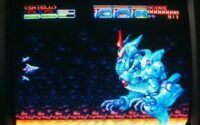
Our Most Anticipated Games for 2025
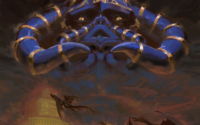
Amiga Games – Part V: “Innocent Pleasures”
